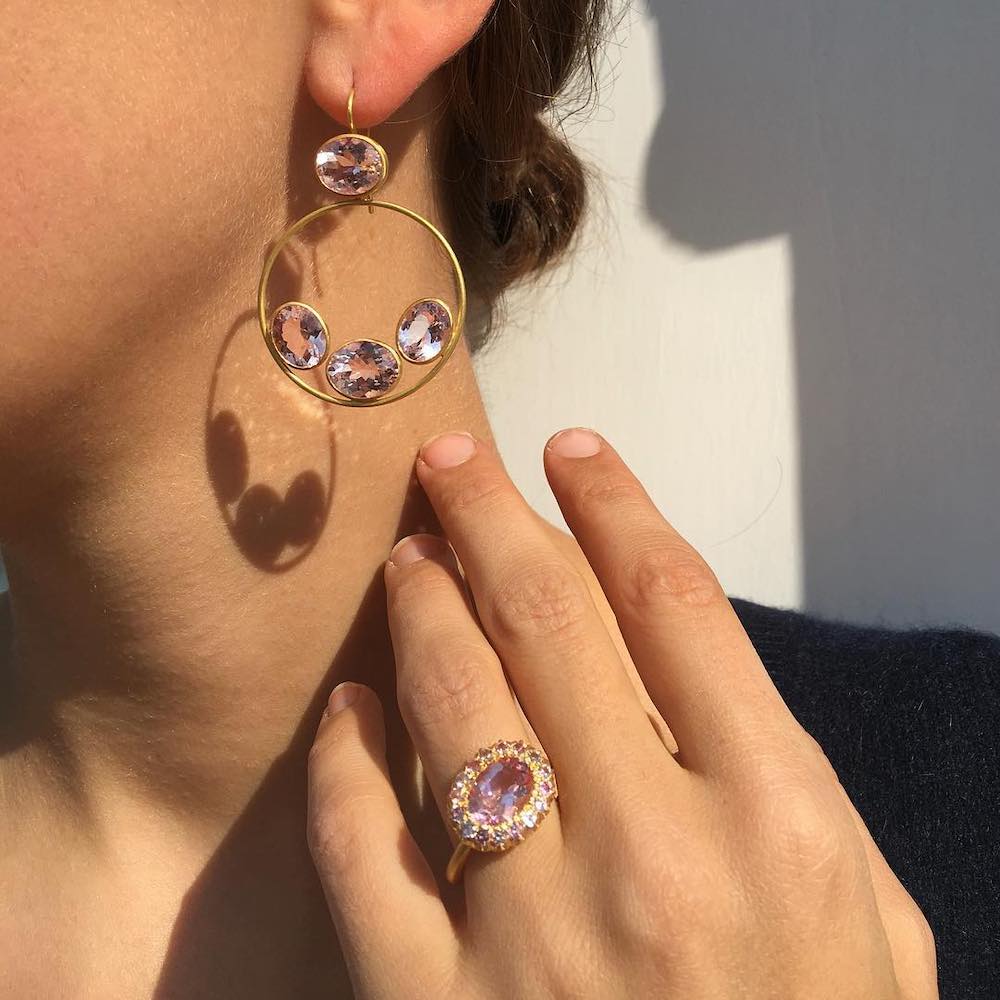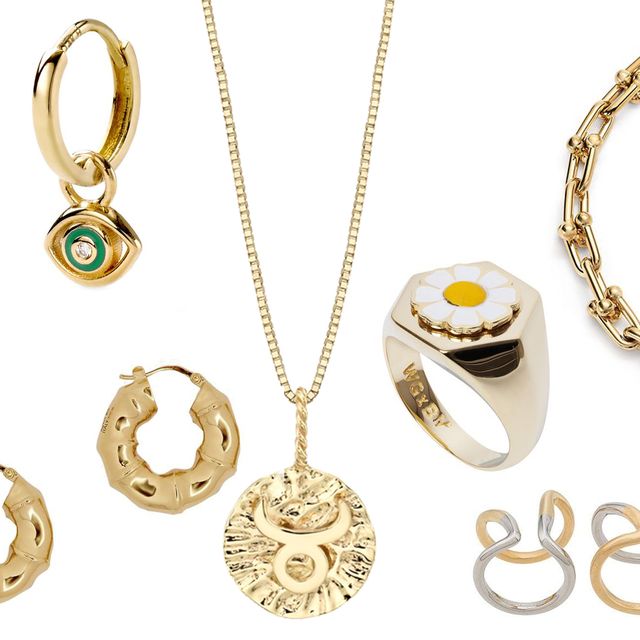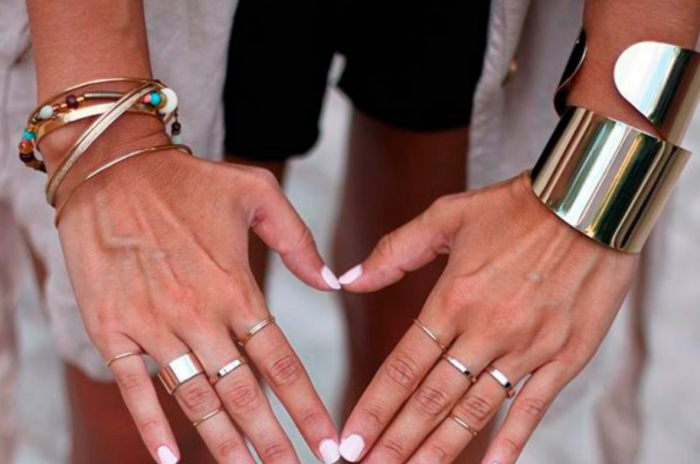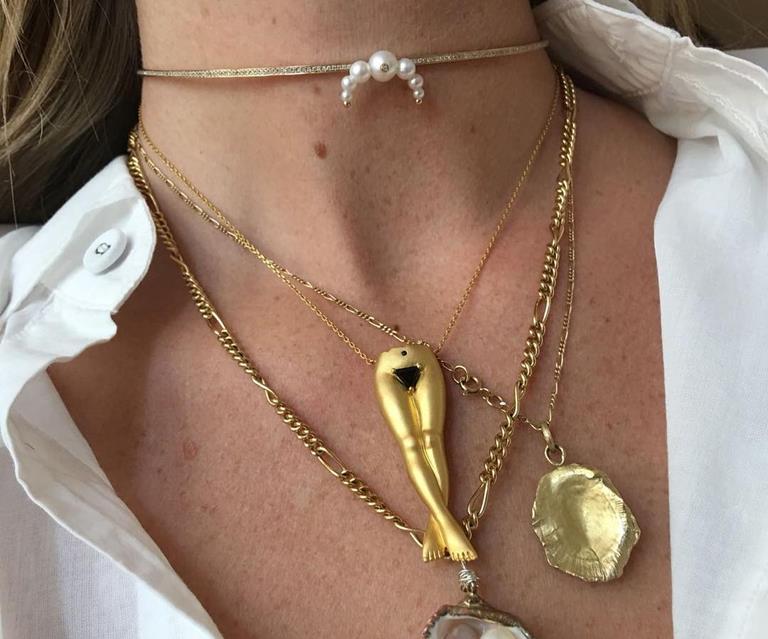
All of us own pieces of jewellery we love to wear regularly. It might be a favourite necklace that transforms an ordinary outfit, or a pair of statement earrings that make us feel fabulous. Wedding rings get daily use as we rarely remove them, and many people own a watch they wear regularly.
What happens when wearing any of these pieces results in a red, itchy rash developing? Is there anything we can do to prevent this from happening?
Fact: that red, itchy rash is likely to be a jewellery allergy. Although there are of course some situations where something else may have caused the rash, a metal allergy is probably the culprit. Does this mean that your favourite piece of jewellery has to be put away never to be worn again? What can be done to prevent the issue in the first place?
One way of avoiding a reaction is by learning which metals are an issue for you. Generally, mixed metals like nickel and steel cause problems, whereas gold and silver do not. If you’re looking for gold, head over to this website and see what is available online at adinasjewels.com/collections/14k-gold.

#1 – What is a Jewellery Allergy?
A jewellery allergy happens when the body reacts to one or more metals, in the spot where the metal comes into contact with the skin. Generally, reactions of this type are more noticeable when a piercing is involved, as the metal goes through the skin as opposed to laying on it, which leads to a stronger reaction.
Most of us with a jewellery allergy are actually allergic to nickel, a metal used to make precious metal alloys. Less expensive jewellery is often made using nickel as the base metal with a gold or silver plating over this layer.
As such, people who think they are allergic to gold and silver tend are most likely to find it’s actually the nickel causing the reaction. Nickel may also be found as a trace element in silver or gold jewellery because it can be used to strengthen and whiten the gold itself.

#2 – Detecting a Jewellery Allergy
Most allergic reactions to jewellery present as contact dermatitis in the area where the metal came into contact with the skin. Redness, bumps, and blisters might appear, leading people to believe they have come into contact with poison ivy or something similar! The area becomes irritated and itchy or it may become dark, thick, and dry.
Irritation and itchiness are associated with acute dermatitis while dark, thick, and dry skin come with chronic dermatitis. In the early stages, the allergy is confined in the area where the jewellery was worn. If left untreated, the problem may spread beyond the initial location, especially when the hands are affected.
Furthermore, it’s possible to develop pompholyx, a type of hand dermatitis that leads to blisters, and it’s often seen in on those who have a history of jewellery allergies. In this situation, flare ups can be triggered from contact with other nickel sources such as keys and coins, so watch for these items and see if the skin reacts from contact with them.
Common places for reactions are the earlobes (because the earrings go through the skin), around the neck where necklaces rest, or on the fingers. It’s easy to work out if this is a jewellery allergy given that the symptoms appear in the exact spot where the jewellery came into contact with the skin. Unfortunately, allergies can develop at any time. People may wear the same piece of jewellery for years only to suddenly have a reaction.

#3 – Treating a Jewellery Allergy
The first step in treating a jewellery allergy is determining if this is exactly what you are experiencing. If you suspect it is, stop wearing the jewellery temporarily and see if the symptoms go away. In many cases, the symptoms will disappear, but if not, you may also use an anti-inflammatory steroid cream, such as cortisone, to help clear the rash up.
When the rash has disappeared, wear the piece again. If the irritiation reappears, then clearly you have developed an allergy to a metal in that piece. If the rash doesn’t clear up, it’s time to see a doctor determine what is going on and what is causing this reaction. Tests can be done to determine the underlying cause of the reaction.
For instance, a person might develop a rash under their wedding ring, and assume this is from the ring itself, as this is the only place the rash occurred. In fact though, the rash may be brought about by using a new type of soap if the soap wasn’t fully washed away from under the ring. No longer using this product will likely be enough to clear up the rash and let you to go back to wearing your favourite jewellery again.
Don’t assume the symptoms are a result of a jewelry allergy without doing a little investigation. The doctor can be of great help in learning exactly what is going on and why the symptoms are being seen if you can’t figure this out at home. Often, this involves a skin test where the body is exposed to a wide range of potential allergens to learn which ones cause reactions and which ones do not. The doctor determines the best way to test for potential allergies, however, and may choose another method.
#4 – Buying Jewellery
If you’ve determined you’ve got a jewellery allergy, what can you do to prevent future reactions? First off, purchase nickel-free jewellery whenever possible. Try 18-karat gold dainty earrings or sterling silver pieces to see if they work. Take care, however, as 18-karat gold is extremely soft and manufacturers often combine it with another metal to make it harder.
Stainless steel and hypoallergenic jewellery are other option to consider, but it’s still important to make sure the area where the metal comes into contact with the skin is dry at all times. A layer of protective moisturising cream will help to prevent reactions too.
Look for pieces made using alternative white gold alloys. These alloys tend to use palladium, silver, or other white metals rather than nickel. Always request a stainless steel needle when having the body pierced and ensure the jewellery is made of 18- or 24-karat gold or stainless steel. And if you can’t get earrings in these metals, wear plastic covers created for earring studs to prevent a reaction – they prevent the metal from coming into contact with the skin and causing the reaction.
#5 – Until You Can Get to the Jeweller
Another solution for wearing a favourite piece that you are allergic to is to coat the portion of the jewellery that comes into contact with the skin with clear nail polish. This helps to stop the reaction as the skin doesn’t come into direct contact with the metal. However, this step may need to be repeated every time you wear the jewellery to prevent the reaction, so its best to look for more permanent solutions.
It’s a good idea to take the jewellery to a reputable jeweller and get the piece plated using a non-allergic metal. Options include platinum and rhodium, but this process needs to be repeated regularly as the plating does wear off with time.
Finally, if it’s a piece you simply love and can’t do without, then just keep wearing it. Simply wear it for shorter periods of time and less frequently! This is never the best option, but it may be the only solution if you’re desperate.
Don’t throw away your favourite jewellery pieces simply because you think you have developed an allergy to them. First, make sure they are the cause of the allergic reaction because as we’ve shown, in some cases it could be another reason which is causing the problem.
Lastly, when buying new jewellery, look for those pieces that are least likely to cause reaction. That’s those without nickle, lead, or which you can at least have re-plated at the jeweller.

No Comments